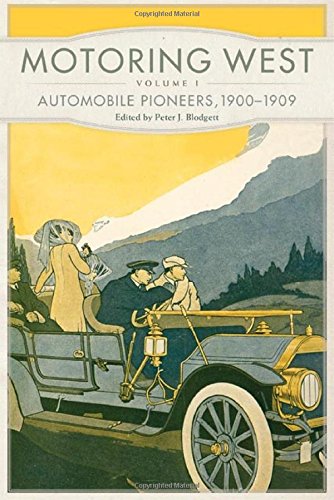
In the first years of the twentieth century, motoring across the vast expanses west of the Mississippi was at the very least an adventure and at most an audacious stunt. As more motorists ventured forth, such travel became a curiosity and, within a few decades, commonplace. For aspiring western travelers, automobiles formed an integral part of their search for new experiences and destinations—and like explorers and thrill seekers from earlier ages, these adventurers kept records of their experiences. The scores of articles, pamphlets, and books they published, collected for the first time in Motoring West, create a vibrant picture of the American West in the age of automotive ascendancy, as viewed from behind the wheel.
Documenting the very beginning of Americans’ love affair with the automobile, the pieces in this volume—the first of a planned multivolume series—offer a panorama of motoring travelers’ visions of the burgeoning West in the first decade of the twentieth century. Historian Peter J. Blodgett’s sources range from forgotten archives to company brochures to magazines such as Harper’s Monthly, Sunset, and Outing. Under headlines touting adventures in “touring,” “land cruising,” and “camping out with an automobile,” voices from motoring’s early days instruct, inform, and entertain. They chart routes through “wild landscapes,” explain the finer points of driving coast to coast in a Franklin, and occasionally prescribe “touring outfits.” Blodgett’s engaging introductions to the volume and each piece couch the writers’ commentaries within their time.
As reports of the region’s challenges and pleasures stirred interest and spurred travel, the burgeoning flow of traffic would eventually and forever alter the western landscape and the westering motorist’s experience. The dispatches in Motoring West illustrate not only how the automobile opened the American West before 1909 to more and more travelers, but also how the West began to change with their arrival.
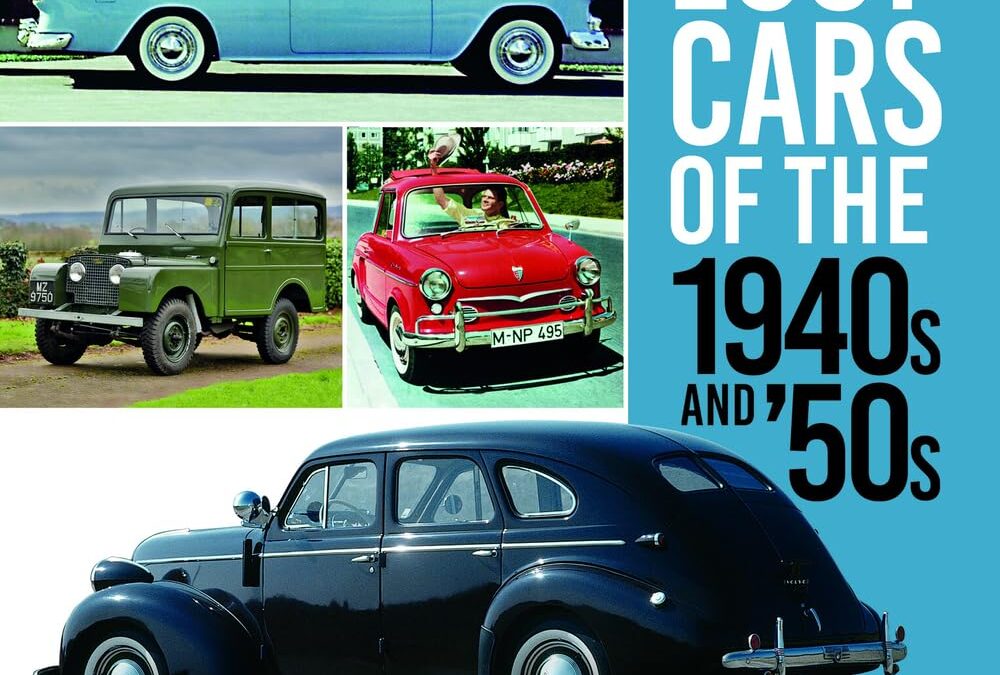
Sixty diverse cars, sixty fascinating stories, sixty contrasting specifications, but just one uniting factor: they’re all forgotten, neglected or misunderstood classics. In this engaging new book, these casualties and sideshows of motoring history from around the world finally get the recognition they deserve. Revisit daring new designs, interesting new economy cars, affordable sports cars, and some extraordinary luxury cars, from post-war austerity to the you’ve-never-had-it-so-good era, during which these elusive machines briefly shone. It was a time when engines gained more power, suspension became more cosseting, the chassis frame became a thing of the past, and styling followed jet fighters and space rockets. Giles Chapman, award-winning author of Lost Cars of the 1970s, has gathered together an all-new selection of intriguing strays of the car world, superbly illustrated with rarely-seen archive and contemporary images that bring all these cars back to life… even if they misfire once again in the process!
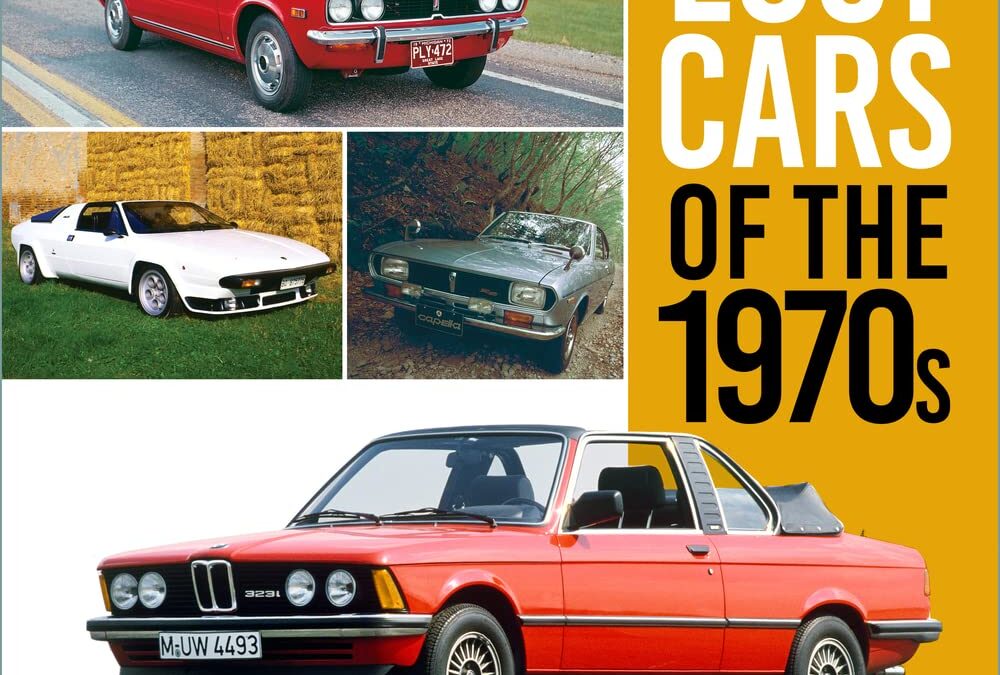
Sixty diverse cars, sixty fascinating stories, sixty contrasting specifications, just one uniting factor: they’re all forgotten, neglected or misunderstood classics.
The casualties and sideshows of motoring history from around the world finally get the recognition they deserve. Revisit a motoring decade when fuel economy was top priority, the rotary engine rose and fell, and car-buyers wanted a hatchback and the latest styling and safety features. Those that made the grade found global popularity – now meet the cars left behind.
Italy’s clever plan to update the Mini; the French GT coupé with an extra seat; America’s electric runabout that paved the way for Tesla; Britain’s stylish, homespun sports cars; the Japanese limo meant to do 25mph; the ‘safety car’ turned into a Polish workhorse… each one enjoys a detailed review giving the context and thinking around them.
The terrific archive images also highlight thirty 1970s design specials and one-offs – even more amazing cars pointing to a future that never quite came true.
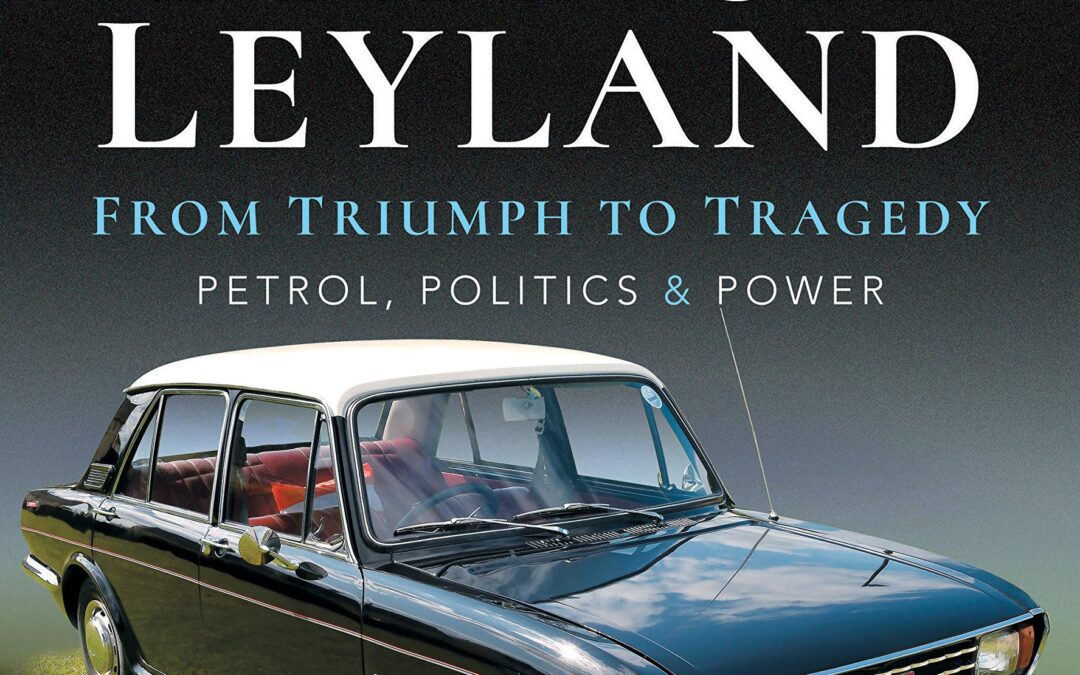
What really happened at British Leyland (BL)? Was it ‘just’ the cars, or were other factors vital to the story? Who really was to blame for BL and MG Rover’s death?
The ‘truth’ about BL is deeper than its cars – were ultra- Left-wing plots to topple BL and British society real? Did secret deals and political intrigue really exist? Was it Labour or Conservative powers who ‘killed’ BL, or was it BL itself? How was it that BL’s design genius was hobbled?
Author Lance Cole lifts the bonnet on BL and presents a forensic yet easy to read new analysis in a story of BL, its cars, and the era of their motoring as powers on the political Left and Right waged war, sometimes even with themselves.
Here is a book about cars and more, a conversation on all things BL: this is a new account of a classic British story told across a trail of evidence in a British industrial and political drama.
Many mistakes made BL, but some of the cars were superb, the designs of genius, the engineering excellent; it is just that we have either forgotten, or been brainwashed into believing the worst.
In a BL book like no other, written by a classic car fanatic with a background in industrial design, automotive, and wider journalism, this story lifts the lid on BL’s cars and more. The author also adds inside knowledge from time working in the motor industry.
Lance Cole tells the deeper BL story across the era of its greatest successes and its biggest failures.
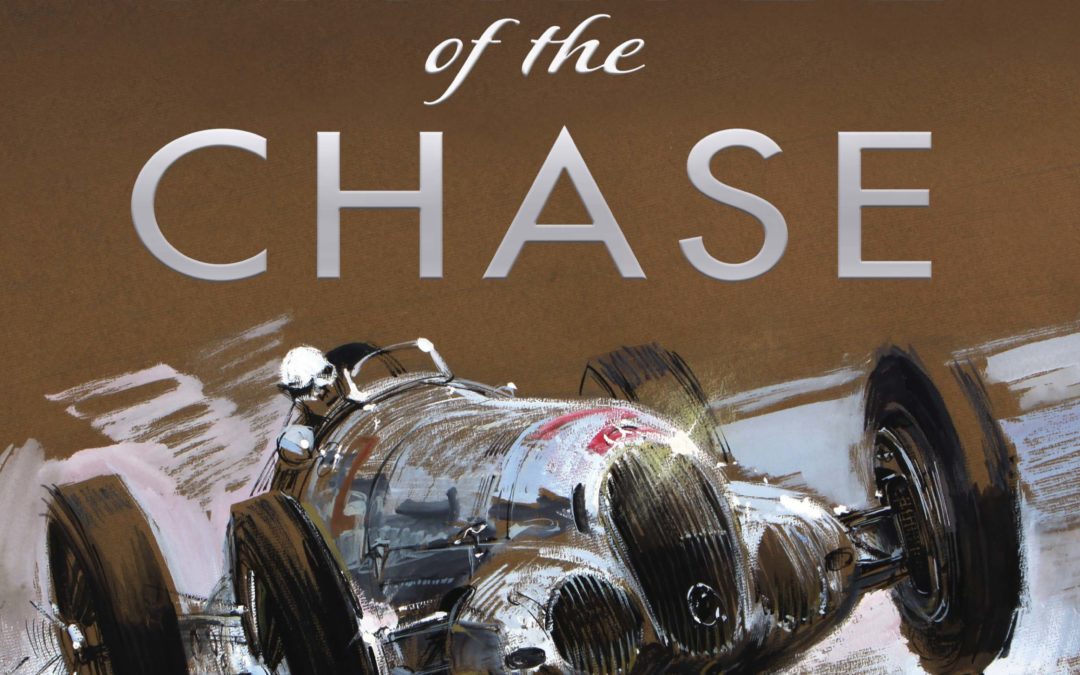
Dalton Watson’s latest autobiography is the life and times of that larger-than-life character, Colin Crabbe, who found himself at the forefront of motor racing, firstly as a privateer racing Ford GT40s in 1966 then driving in the 1967 World Championship. He cut his teeth during 1969 as an owner and team manager in Formula One having found he was too large to fit an F1. Colin reckoned he had to be one of the last great gentleman amateurs at the cutting edge of motor sport. In 1968 he located in East Germany one of the pre-war Silver Arrows, a Mercedes W125 Grand Prix car. Colin raced the Mercedes and numerous other historic racing cars until a bad crash put an end to this in 1988. When not motor racing, he travelled around the globe looking for forgotten treasures in the motoring world. What once was a hobby and passion had become a serious business, albeit one that involved Colin invariably getting himself into various scrapes, tangles and unusual adventures.
- 1,500 copies
- Page Size: 230mm x 280mm
- Page Count: 448 pages
- Photographs: 550 images

Charles Rolls was the first Englishman to be killed in an air crash. He was thirty years old. Rolls’ death shocked the country and made headlines across the world. His relative youth at the time is perhaps the reason that he is a forgotten hero; a man who today receives little credit for the legacy that he left behind, even though at the time of his death on July 12th 1910 he was one of the most famous men in the country. His loss was regarded as a national tragedy. Today he is most famous for the partnership he forged with Henry Royce to form Rolls-Royce, a name that is now as synonymous with excellence as it was then. Yet Rolls was a national hero long before he met Royce in Manchester in 1904.The son of a peer, Rolls was one of the first, and certainly the youngest of Britain’s pioneer motorists. He was a successful racing driver and achieved what many believed impossible – selling the motor car to Britain.With the reliability of the car achieved, Rolls immersed himself in conquering the next great frontier, the air. He made his first ascent in a balloon in 1898 and was experimenting with the possibilities of powered flight as early as 1901.One of the first Britons to fly, he made the first return crossing of the Channel in 1909 in a Wright Flyer and was acclaimed across the world. Charles Rolls was an enigma, a man of great paradox, and yet he was a great patriot, racing driver, record breaker, aviator, one of the United Kingdom’s great industrialists, a pioneer in the true sense of the word and he had a prophetic ability to see the way of the future. This biography quotes extensively from the writings of Charles Rolls himself and from contemporary accounts of the events during those pioneer days of motoring and aviation. It is illustrated by many previously unpublished photographs from the Rolls Family albums.








